science and technology 1500 to 1700
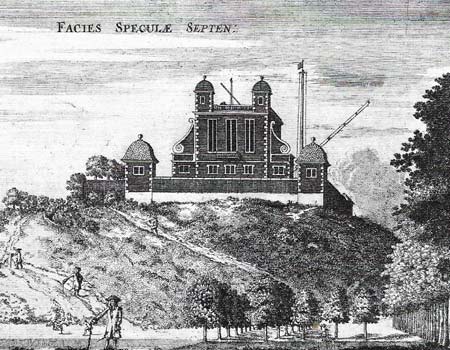
Figure 1. The Royal Observatory at Greenwich was founded in 1675 to compile a new star catalog for navigational use. Designed by Christopher Wren, it became an important center for accurate astronomical observations. The meridian of zero longitude still runs through Greenwich, but actual observation is now done in Sussex.
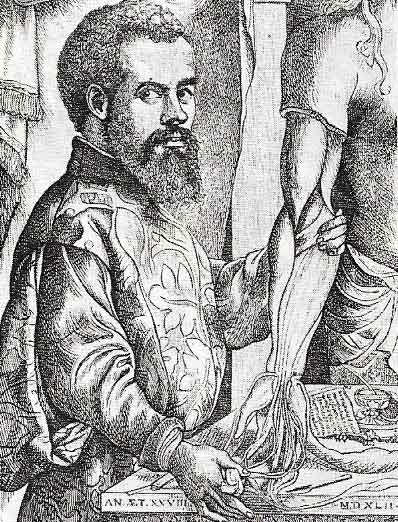
Figure 2. Vesalius, the great 16th-century anatomist, is shown holding a partly dissected human arm. The portrait is taken from his book De Humani Corporis Fabrica.
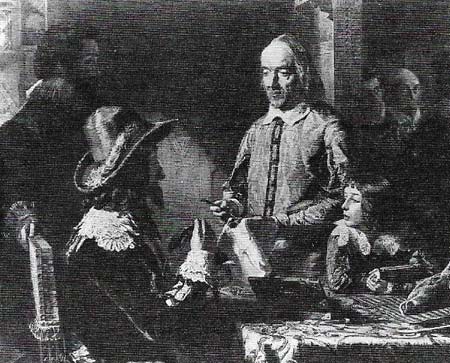
Figure 3. The discovery of the circulation of the blood was published by Harvey in his book De Motu Cordis, in 1628. Harvey is shown in Hannah's painting demonstrating the principle to Charles I.
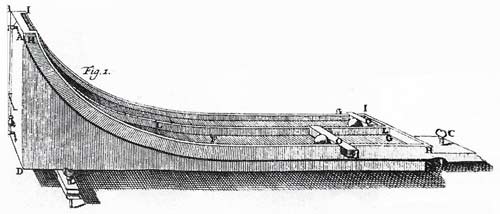
Figure 4. Galileo's research on the motion of balls rolling down an inclined plane led to formulae that were predecessors of Newton's three laws of motion. With his experiments Galileo in effect founded the science of dynamics. The illustration is of an 18th-century experiment in the same tradition.
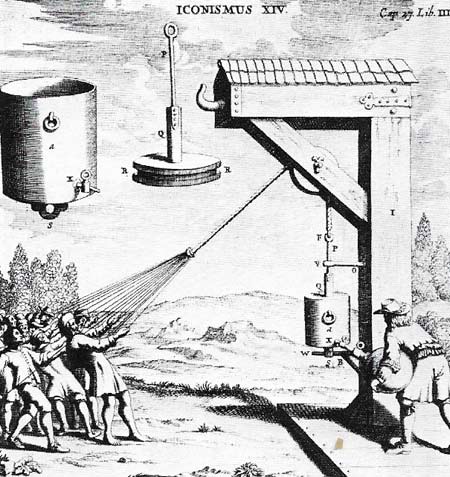
Figure 5. The effects of a vacuum were demonstrated by Otto von Guericke (1602–1686), the burgomaster of Magdeburg, at Ratisbon in 1654. A group of more than 50 men are trying to pull a plunger out of a cylinder from which the air has been exhausted. This is taken from von Guericke's book Experimenta Nova.
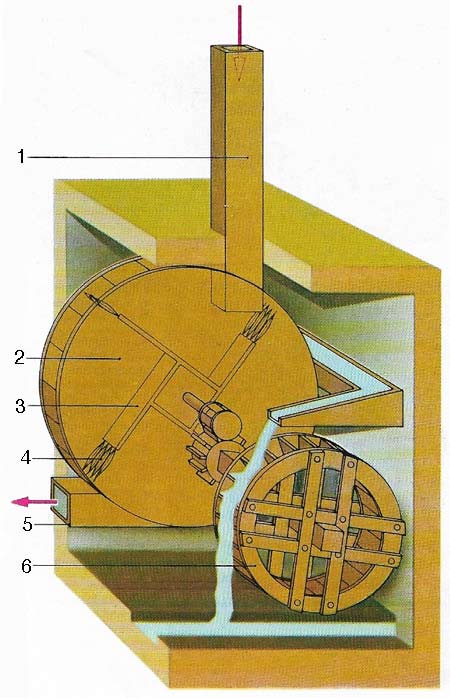
Figure 6. A 16th-century ventilator for a mine worked as follows. A water wheel (6) drove a fan through step-up wooden gearing. The blades (3) of the fan were tipped with feathers (4) and ran inside a drum (2). Air was sucked down the ventilation shaft (1) by the fan and distributed by a duct (5) to the mine workers.
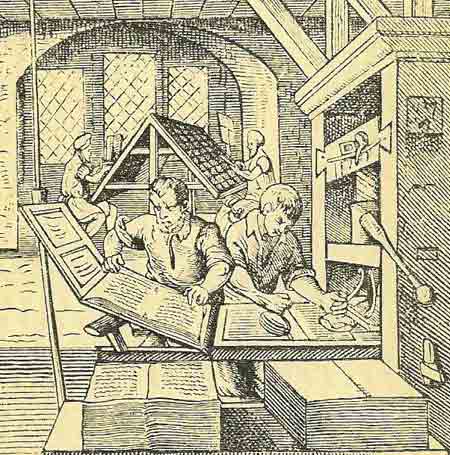
Figure 7. Printing from movable type radically improved the dissemination of knowledge about scientific discoveries in Europe by the 16th century. This woodcut of 1568 by Jost Amman shows a printing works with compositors setting up type in the background, while in the foreground the press is being operated.
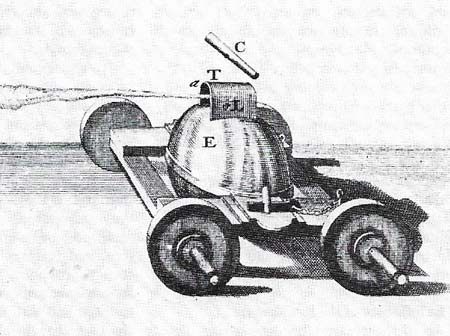
Figure 8. The third of Isaac Newton's three laws of motion states that to every action there is an equal and opposite reaction. An experiment designed to prove the validity of the theory is shown in this early 18th century book on Newton's laws. A metal globe emits a jet of steam in one direction and causes the "engine" to react by moving in the opposite direction.
By the dawn of the 16th century the European Renaissance was well under way, and during the following two centuries the broad basis of modern science was laid. Knowledge of Greek science was widespread and an inquiring spirit that led to a critical examination of ancient ideas prevailed. As a result, the ancient practices of astrology and alchemy were being discarded; some scientists and philosophers realized that nature had to be investigated rationally.
The revolution in astronomy
The first fruits of this new approach came in astronomy. In 1543 the theory that the Sun, not the Earth, was the center of the universe appeared in De Revolutionibus by Nicolas Copernicus (1473–1543). This theory profoundly affected man's view of himself and his place in nature. In astronomy the Copernican theory stimulated a spate of precise observations – notably by Tycho Brahe (1546–1601) – laying the basis for seventeenth-century discoveries with the telescope. Johannes Kepler (1571–1630) used Brahe's observations in his reinterpretation of the planets' motions in terms of ellipses instead of the complex Copernican system of circles. In England, Francis Bacon (1561–1626) advocated the empirical method but denigrated the use of mathematics for the interpretation of results, unlike Rene Descartes (1596–1650), whose work contains many of the philosophical ideas that were at the root of the new spirit of enquiry. Descartes wanted to lay a rational foundation for religion and science to give them a mathematical validity, proof against skepticism and superstition. He formulated an entire philosophical system that postulated a wholly mechanical universe in space completely filled with fluid matter.
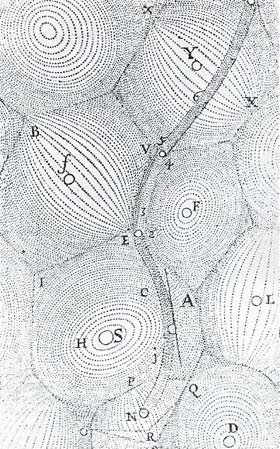 |
| Descartes's idea of the universe rejected the theory of the existence of a vacuum and held that matter was perpetually moving in vortices with stars at their centers. Some stars became planets with orbits on the vortex of another star. Comets wound their way between and across vortices, as in this engraving. |
The Italian astronomer, mathematician, and physicist Galileo Galilei (1564–1642) became the first person to use the telescope to study the heavens. Galileo's conclusions about mechanics laid the foundations for later work, particularly Newton's (Figure 4). But his belief in a universe governed by mathematically regular laws led to great hostility, not least from the Church. The genius of this period was Isaac Newton (1642–1727), whose Philosophise Naturalis Principia Mathemetica is one of the most important works of modern science. In it he defined his laws of motion (Figure 8), developing Kepler's and Galileo's work, and he first formulated the law of universal gravitation. Newton also made important contributions to mathematics, including the invention of calculus, although it had been formulated quite independently by Gottfried Leibniz (1646–1716), the German mathematician.
Discoveries in optics
Science gained new impetus in the seventeenth century from the invention of the telescope and the microscope. Galileo, using the telescope, was able to observe mountains on the Moon, spots on the Sun, the phases of Venus, and the four larger satellites of Jupiter. Improved instruments followed, Newton perfecting the first reflecting telescope in about 1668. This led to further discoveries, as well as the use of the telescope as a celestial measuring instrument of great precision, and the establishment of national observatories in Paris and at Greenwich (Figure 1). The 17th century saw much fundamental work on optics. Willibrord Snell (1591–1626) determined the law of refraction of light. Christiaan Huygens (1629–1695) used this knowledge to improve telescopes, also working with information from Kepler's study of lenses. Above all, Newton showed that white light could be split by a prism into components of every color.
Developments in medicine
In 1538 Andreas Vesalius (1514–1564) (Figure 2) produced his vast study of the human body – the first to go against the teachings of Galen (AD c. 130–c. 200). Vesalius' successor at Padua University, Bartolommeo Eustachio 1520–1574), discovered the Eustachian tubes the ears. In the next century Hieronymus Fabricius (1537–1619) laid the foundations if embryology and discovered valves in the veins, a finding that was used by William Harvey (1578–1657) (Figure 3) who, in 1628, announced his discovery of the circulation of :he blood. Marcello Malpighi (1628–1694) discovered the capillaries connecting veins and arteries and, like Jan Swammerdam (1637–1680) after him, used it also in embryological studies. The microscope greatly helped to advance medical and biological knowledge during a period when they became increasingly based on physiological experiment. In Holland, Anton van Leeuwenhoek (1632–1723) devised his own microscopes to study blood and spermatozoa as well as microscopic life forms.
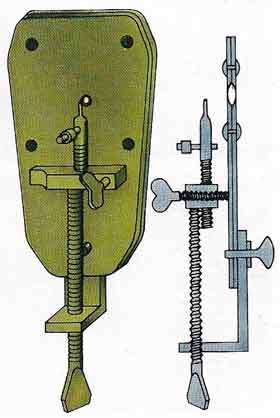 |
| The powerful, single-lens microscope was designed in the 17th century by van Leeuwenhoek. |
In the 16th century botanical encyclopedias became common. In the next century Nehemiah Grew (1641–1712) used the microscope to study the sex organs of plants, and Robert Hooke (1635–1703), John Ray (1627–1705) and others began to reclassify the plant and animal kingdoms. In chemistry, Robert Boyle (1627–1691) experimented on the physical properties of air and formulated his law on the relationship between the pressure and volume of a gas.
Rationalism and observation now replaced superstition and dogma as scientific guidelines. With this new spirit scientific societies could flourish; the Royal Society was founded in 1660 in London and the Academie des Sciences in Paris in 1699.
